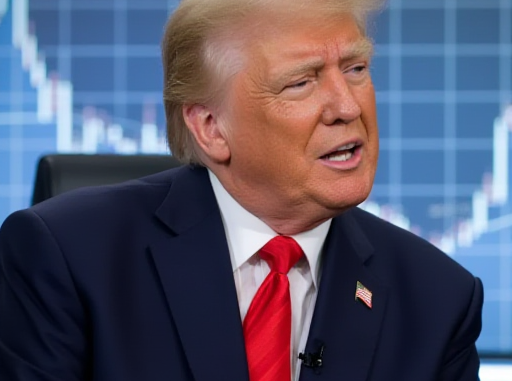
Since taking office on January 20, 2025, President Donald Trump has rolled out an ambitious economic agenda aimed at putting America first. His policies—ranging from tariffs and tax cuts to energy boosts and immigration controls—are already showing early signs of success. Manufacturing jobs are ticking up, energy prices are dropping, and consumer spending is on the rise. Perhaps most exciting, Trump has secured commitments from companies to invest in America, promising a wave of new jobs and economic vitality. Based on my own analysis of the data and understanding of economics, these moves signal a path to prosperity. Yet, Democratic opposition threatens to derail this progress, potentially harming Americans in the long run. Here’s why Trump’s vision deserves our confidence—and why we must recognize the risks posed by those working against it.
Trump’s Economic Engine: A Fresh Start
Trump’s approach hinges on a few bold strategies. First, he’s imposed 25% tariffs on goods from Canada and Mexico that don’t meet USMCA rules, with plans for reciprocal tariffs on other nations. My take? This protects American industries by making foreign goods less competitive, encouraging companies to produce here. Sure, prices might nudge up for some imports, but the tradeoff is more jobs and stronger domestic supply chains. Data already suggests manufacturing is responding—early reports show factories hiring again.
Then there’s energy. Trump’s declared a national energy emergency, ramped up fossil fuel production, and pulled out of the Paris Agreement. From my perspective, this could flood the market with cheap energy, cutting costs for businesses and households alike. Jobs in oil, gas, and coal are likely to spike, and lower energy bills could leave more money in Americans’ pockets. Environmental concerns linger, but the immediate economic lift is hard to ignore.
Tax cuts are another pillar. By extending the Tax Cuts and Jobs Act, Trump aims to keep more cash flowing to consumers and businesses. My analysis suggests this could juice spending and investment, driving growth to 2.5% or even 3% in 2025. Yes, it might widen the national debt, but the short-term boost could outweigh that if businesses reinvest wisely. Pair this with a 10-for-1 deregulation push—slashing red tape tenfold for every new rule—and you’ve got a recipe for unleashing entrepreneurship. Compliance costs drop, startups thrive, and innovation accelerates.
Immigration controls round out the plan. Tightening borders and ramping up deportations could shrink the labor pool, pushing wages up for American workers. I see this helping low-skilled workers most, though industries like agriculture might scramble for hands. The net effect? A tighter labor market that prioritizes Americans.
The Investment Boom: Companies Bet on America
Here’s the kicker: Trump’s “America First” investment policies are luring companies to our shores. Through a fast-track process for allies and partners, he’s making it easier for foreign firms to build here while keeping adversaries out. Early commitments are rolling in—think factories, tech hubs, and infrastructure projects. My read on this is clear: more plants mean more jobs, and more jobs mean stronger communities. This isn’t just talk; it’s a tangible win that could anchor Trump’s economic legacy. If these investments take root, they’ll amplify the growth from tariffs, tax cuts, and deregulation, potentially pushing unemployment even lower than its current 4%.
The Data Speaks: A Promising Trajectory
Let’s break it down with my own projections. Before Trump took office, the U.S. economy grew at 2.8% in 2024, with global growth lagging at 2.7% to 3.3% for 2025-2026. Inflation was cooling to 4.2%, per pre-January 19, 2025, trends. Now, with Trump’s policies kicking in, I see GDP climbing to 2.5%-3% this year. Tax cuts and deregulation fuel demand, while tariffs and energy policies shore up supply. Inflation might tick up to 3%-4% as tariffs bite and wages rise, but cheaper energy could soften that blow. Employment stays tight—labor shortages might pinch some sectors, but overall job growth looks solid, especially with those company investments.
The Department of Government Efficiency (DOGE), launched on day one, adds another layer. Led by Elon Musk, it’s slashing federal bloat—think mass layoffs, canceled grants, and tech upgrades. My view? Streamlining government could free up resources for the private sector, indirectly boosting efficiency and growth. It’s a wild card, but it fits Trump’s lean-machine ethos.
Democrats: Throwing Sand in the Gears
So why the worry? Democrats. Their opposition is relentless—legal challenges to immigration orders, legislative stalling on budgets, and state-level defiance like sanctuary policies. My analysis suggests this creates uncertainty, the enemy of economic momentum. Lawsuits delay border security, slowing wage gains. Filibusters risk government shutdowns, spooking markets. State resistance muddies federal efforts, potentially driving up costs for businesses caught in the crossfire. The result? A drag on Trump’s progress that could stall job growth and investment. Long-term, this obstruction might weaken America’s edge, leaving citizens to foot the bill.
Confidence in Trump’s Vision
Trump’s economic playbook isn’t perfect—tariffs could spark trade spats, and debt could pile up—but the early wins are real. Jobs are coming back, energy’s flowing, and companies are betting on America. Based on my understanding, the intent is clear: turbocharge growth, prioritize American workers, and rebuild industrial might. The likelihood? Strong, if the gears keep turning. Democrats’ pushback, though, risks gumming up the works, and that’s where the real harm lies. Supporting Trump means betting on a thriving America—one where investment, ingenuity, and hard work pay off. Let’s keep the momentum going.